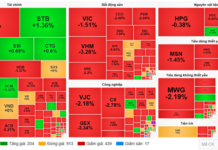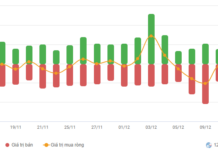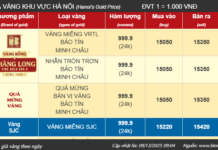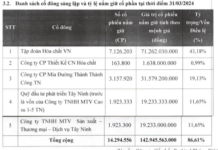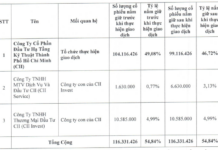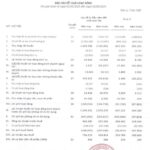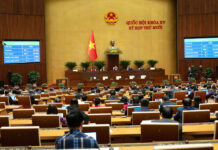A rare consensus is emerging as all parties in the construction industry—from regulatory bodies, investors, contractors, consultants, to manufacturers—point out the “unimplementable” flaws in the current mechanism for announcing construction material prices.
The pressure for reform is mounting on the Ministry of Construction, with a central request: a systemic “shock” through amendments to the Construction Law and related decrees. Developing a single national web platform is seen as an indispensable tool to realize this reform.
An Unmanageable and Contradictory Equation
Feedback from Departments of Construction in Hanoi, Quang Ninh, Da Nang, Can Tho, Dong Nai, Dak Lak, Ca Mau, Phu Tho, and Lam Dong reveals a common struggle, rooted in overlapping and contradictory legal provisions.
The issue isn’t just about overwhelming workloads or a lack of unified methods. The Dak Lak Department of Construction notes that, post-administrative consolidation, they must handle data from 102 communes instead of the previous 15, making the compilation of construction material prices cumbersome and resource-intensive.
Departments in Ca Mau, Lam Dong, and Dong Nai also highlight a systemic paradox: the Construction Law and its subordinate regulations mandate that they “announce prices,” which conflicts with the spirit of the Price Law.
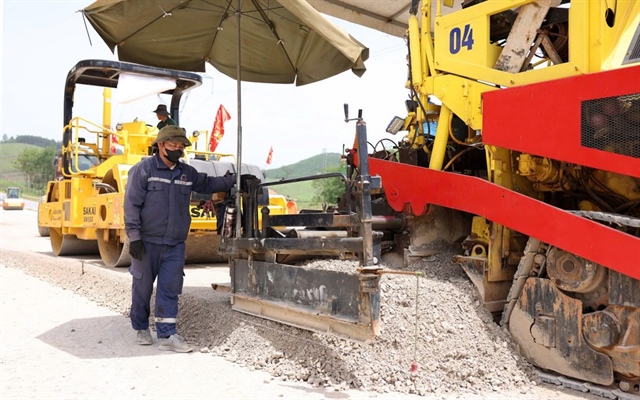
The gap between announced and actual construction material prices poses challenges for contractors. Photo: V.LONG |
Localities argue that the Price Law clearly establishes a market mechanism—the state does not set prices but manages through reference price announcements, price indices, and stabilization measures when necessary. However, construction regulations place Departments of Construction in a de facto “price-setting” role, requiring them to announce specific price lists for transactions. This misaligns with market principles and creates legal risks and accountability pressures for these departments.
Thus, the problem lies not just in implementation challenges but in the legal framework’s inherent flaws. Amending the Construction Law to align with the Price Law, shifting from “periodic price announcements” to “providing reference price data” via a national digital platform, is essential to resolve this conflict.
Accountability Pressures and Project Management Risks
Project management boards, directly responsible for financial efficiency and project timelines, have voiced numerous concerns about the current price announcement mechanism’s repercussions.
Units like the Dau Tieng Area Construction Investment Project Management Board (Binh Duong), the Thai Nguyen Traffic and Agriculture Project Management Board, and the Duyen Hai Area Project Management Board (Vinh Long) report that announced prices consistently lag behind market fluctuations.
This discrepancy not only causes inconvenience but also complicates cost estimation, tender pricing, payment, and settlement processes.
Many investors find themselves in a “no-win situation” due to the gap between announced and actual prices. This is particularly acute in the Mekong Delta, where material prices fluctuate sharply—steel prices once rose by over 1.1 million VND/ton in a month, and cement by 60,000–90,000 VND/ton.
At the Chau Thanh A District Construction Investment Project Management Board (Hậu Giang), many contractors ignore awarded bids due to construction material prices soaring above initial estimates.
“We’ve lost 15–20% on projects due to sudden material price hikes. Some projects required billions in losses, even halting construction until prices cooled,” said Tran Van Tam, Director of Truong Thinh Construction Company (Can Tho).
Phong Phu Construction and Trading Technical Services Company also noted advancing 3–4 billion VND to sustain projects, waiting for prices to drop before proceeding.
Using announced prices leads to contractor losses and bid abandonment, disrupting timelines. Conversely, using market prices complicates settlement for investors and invites scrutiny from auditors. This prolongs settlement processes, increases compliance costs, and heightens violation risks.
Price Traps, Bankruptcy Risks, and Cash Flow Pressures
Contractors, from large corporations to small enterprises, face significant risks due to flawed pricing mechanisms. Vinaconex reports that unrealistic announced prices result in heavy losses during construction, directly impacting profitability and business survival.
Many firms face similar issues. Announced material prices, lower than actual costs, frequently stall payment for completed work. Contractors request payment based on actual prices, but investors insist on announced prices, leading to disputes and cash flow stagnation.
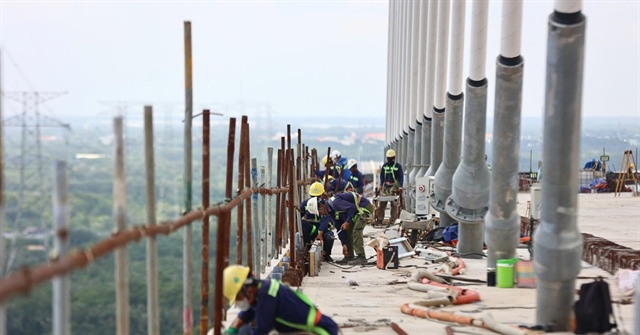 Many Mekong Delta projects struggle with material scarcity and high costs. Photo: V.LONG |
This weakens financial capacity, delays projects, and wastes public investment. Clearly, the current pricing mechanism creates a “risk trap” for contractors, threatening the industry’s financial health.
Consulting firms like CDC, Global Construction and Design Consulting, Tan Phat Consulting, VTCO Investment, and BQP Construction Investment Consulting have submitted proposals to the Ministry of Construction.
They highlight numerous issues: incomplete and inconsistent material lists; significant price disparities between localities; lack of coordination mechanisms and mandatory transparency in enterprise price reporting; and no legal framework for price surveys.
Consultants are caught between accurate estimation demands and chaotic market realities. Without a single “source of truth,” cost estimation and validation are prone to errors, risking both investors and validators.
A National One-Stop Mechanism for Construction Material Prices
From these proposals, a rare consensus has emerged. All parties advocate for “Digital Transformation in Managing Construction Material, Equipment, and Machinery Prices—Developing a Single National Web Platform for Transparency and Investment Efficiency.”
This platform would serve as a “national one-stop mechanism” for construction material prices. Amaccao Group suggests features like enterprise coding, real-time price listing, origin tracing, and data monitoring-analysis tools for regulators.
All agree that the solution requires not just new technology but comprehensive institutional reform. Amending the Construction Law and related decrees, especially Decree 10/2021, is imperative.
The new legal framework should focus on three aspects:
1. Recognizing the legal value of digital data: Price data for materials, labor, and machinery posted by enterprises on the national platform must be considered a national database, uniformly used for management, estimation, bidding, payment, and settlement.
2. Clarifying responsibilities: The Ministry of Construction acts as the national focal point; provincial People’s Committees shift from “price announcement” to “data utilization and oversight”; enterprises ensure truthful information posting.
3. Establishing oversight and sanctions: Regulators need tools to flag and address misinformation, ensuring transparency and fairness.
The national web platform for construction material prices is not just a technological solution but a digital tool to implement the new institutional framework—translating legal principles into practical actions.
The widespread consensus indicates that construction material price management is ripe for systemic reform. The solution requires a long-term vision and a strong “institutional shock.”
Amending the Construction Law and related decrees is the “key” to unlocking this bottleneck, with the national digital platform driving reform—creating a transparent, fair, and sustainable construction investment environment.
|
Resource Waste from Price Announcements Recently, material producers and suppliers like Amaccao Group, Prime Group, Cadisun, Carboncor Vietnam, and Van Xuan Cable have spoken out strongly. Cadisun notes: “Though we operate nationwide, only 25% of provinces agree to list our product prices.” The current mechanism forces enterprises to announce prices separately in each locality, which is impractical, as national base prices are already unified. Companies maintain staff solely for repetitive price announcement procedures across provinces, increasing operational costs and product prices. They propose a unified national announcement mechanism through digital transformation, where enterprises post once on a national platform and take responsibility for the data. |
Do Duc Thang, Investment Construction Economics Management Department, Ministry of Construction
– 06:25 22/10/2025
FPT Profits Soar: Earning $1.5 Million Daily
After the first nine months of 2025, FPT reported revenues of VND 49,887 billion and pre-tax profit of VND 9,540 billion, achieving 71% of the annual plan and marking a nearly 18% increase compared to the same period last year. This positive performance is driven by the growth of the Technology and Telecommunications segments, with overseas IT services and the Made-by-FPT ecosystem continuing to expand robustly.
Entrepreneur Hoang Quoc Viet Shares Insights on Hong Bang International University Investment: 20x Growth in 10 Years, Emphasizing M&A Success Through Expertise, People Understanding, and Strategic Positioning
“When investing, it’s crucial to believe in the potential for exponential growth, as no one wants to sell their company at a low price,” emphasized Mr. Hoàng Quốc Việt, Chairman of Nguyễn Hoàng Group (NHG).
Digital Land Titles Coming to VNeID App
The Ministry of Public Security is collaborating with the Ministry of Agriculture and Environment to develop a feature on the VNeID app. This feature will enable citizens to self-submit, verify, and authenticate land and residential ownership information directly from the National Population Database, eliminating the need to provide physical copies of land certificates or citizen ID cards.


